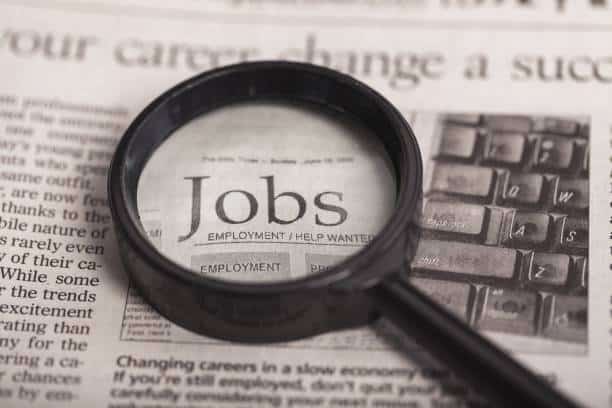Canadian Banking & Finances
When you arrive in Canada, one of the first things you will need to do is obtain a bank account. Having a bank account is essential in Canada in order to make purchases, make payments and organize your finances.
Banks & Credit Unions
There are many different banks in Canada, and each offer different services and benefits for newcomers. Before you obtain a bank account, it is useful to compare what benefits you can get from different banks. The major banks in Canada are Royal Bank of Canada (RBC), Canada Trust (TD), ScotiaBank, CIBC, and BMO bank. All of these banks offer exclusive services and benefits for newcomers, which will give you more advantage when you arrange your finances. Here is a comparison of some of the best banking options for newcomers. In addition to banks, some Canadians also choose to put their money in Credit Unions. These are financial cooperatives that are owned by their members. There can be benefits and drawbacks whether you choose to put your money in a credit union or bank, so you may want to discuss options with your settlement team.
Opening a Bank Account
In order to obtain a bank account, you will need to have documents that prove your identity. You should bring: (1) the Confirmation of Permanent Residence (CoPR) (a document that new Permanent Residents receive from Immigration Refuges and Citizenship Canada (IRCC) either before they travel to Canada or when they land in Canada); (2) any travel permits, refugee travel documents or passports (unless they are expired); (3) Some banks also require a Social Insurance Number (SIN).
Make sure to ask for paper statements to be delivered to your address for at least the first few months. “Statements” are the monthly documents you will receive that list the amount of funds you have in your bank account and how much you have deposited or withdrawn. Statements also list your name and address, so they can be used to apply for other documents such as health cards.
Types of Bank Accounts
There are two main types of banking accounts in Canada: (1) checking and (2) savings accounts.
- Checking account: This is the account you will use for day-to-day transactions such as paying bills, receiving money, depositing your salary, or making purchases. You can also set up “Pre-Authorized Debit” from your checking account so that bills you pay regularly (for ex., your rent payment) are deducted automatically from your checking account. When you open a checking account you will also get a “debit card”. This card looks like a credit card but is not a credit card. It allows you to make purchases in stores or to withdraw money from an ATM (Automated Teller Machine) or as they are sometimes called in Canada, “bank machine”, that will be taken directly from your checking account. Some banks charge a monthly fee for maintaining a checking account, so make sure you are aware of any fees.
- Savings accounts: Savings accounts are for money that you do not need every day. So if you want to save money for a car or a trip, for example, you can put money into a savings account and leave it there until you are ready to use it. Savings accounts allow you to deposit money and receive interest that is added to your deposit. Different banks offer different benefits and packages of saving accounts for different purposes, such as saving to buy a house, saving for retirement, or for future education. Be aware that some banks require you to have a minimum amount of money in the account at all times.
Building a Credit History in Canada
Having a Canadian credit card and making regular payments on it is the best way to build up a “credit history“. This is a record of how well you have paid off your debts and shows banks that you can be trusted with money. You will need a good credit history in order to purchase things like a phone plan, car or house. Because newcomers do not have a credit history in Canada, the best way to establish one is to apply for a credit card through your bank.
You may be able to apply for a “secured credit card“. Policies vary by bank, but typically you make a deposit onto the credit card and you can “charge” up to that amount. So if you make a deposit of $1,000, you can charge up to $1,000 on your credit card and it comes out of the deposit that you made. This is a good way for newcomers or those without any credit history to build up a credit history before applying for other types of credit cards.
Regardless of which credit card you apply for, it is important to do certain things to establish a good credit history. (1) Make your credit card payment on or before the due date every month; (2) Attempt to pay off your credit card each month whenever possible; (3) Limit the number of cards you apply for and use; (4) Only purchase things that are within your budget.
Paying for Goods & Services
There are 3 main ways that people use to pay for goods and services: (1) cash; (2) debit; and (3) credit card.
- Cash: Most businesses accept cash (Canadian dollars), however, during COVID many businesses moved away from accepting cash.
- Debit: A debit card allows you to use ATMs to withdraw or deposit money in addition to paying in stores or online. When you pay from your debit card the funds are withdrawn directly from your bank account. When you receive your new debit card from the bank, you will be asked to set a PIN number. When you use your debit card to pay in shops and stores, you will insert this PIN number to authorize payments. Many stores also have contactless “tap to pay” machines where you simply tap your debit card and do not have to enter your pin (see it in action here). You can check this page to learn more about how and where to use your debit card.
- Credit Card: Unlike a debit card, when you use your credit card, you are borrowing money from the bank that you will pay back (or pay a minimum payment back) at the end of every month (see “Building a Credit History” above). Like your debit card, your credit card can be used to pay in stores or online, you will choose a PIN number to use with it, and there are also “tap to pay” machines in most stores. This page offers more information about using your credit card in Canada.
Finally, when you live in Canada you will hear people mention “Interac” payments. Interac links all of Canada’s banks together so that you can transfer funds and make payments between different bank accounts (similar to EFTPOS in Australia). The Interac Online system allows you to buy items online with funds deducted directly from your savings or checking account. Using Interac you can also transfer money to anyone in Canada who has an email address and a Canadian bank account.






